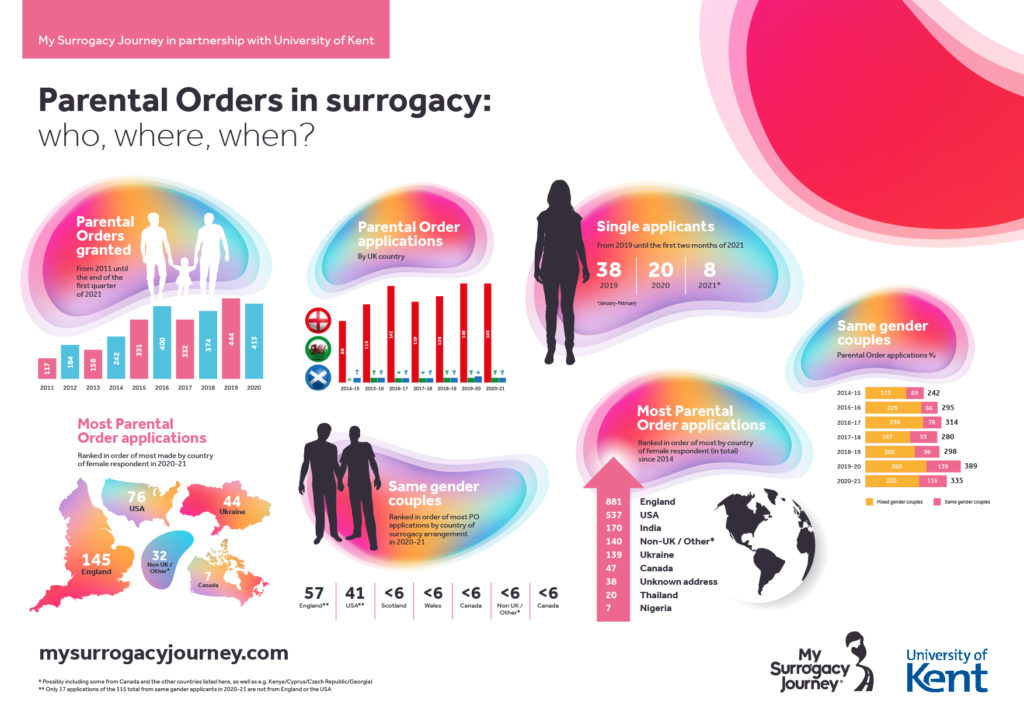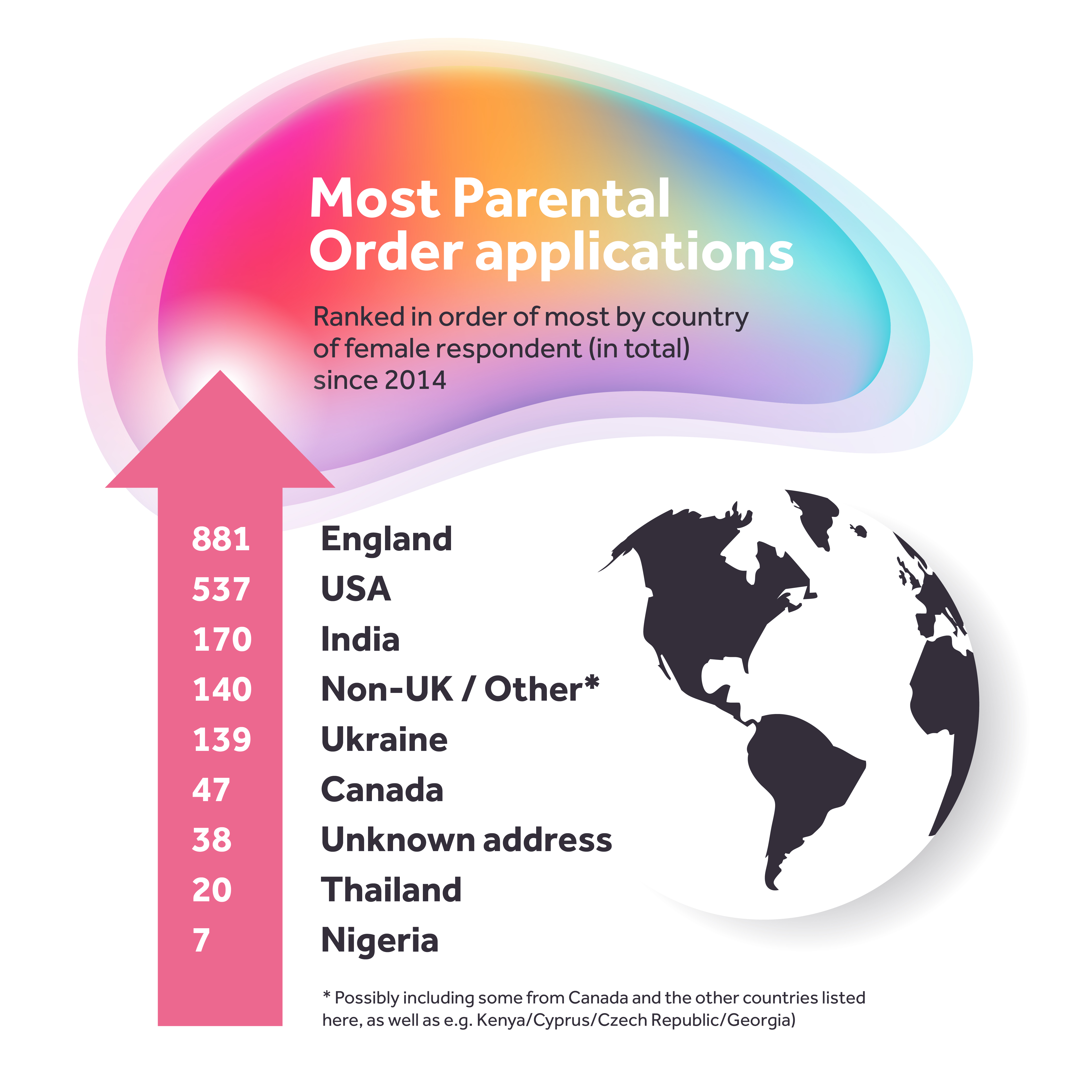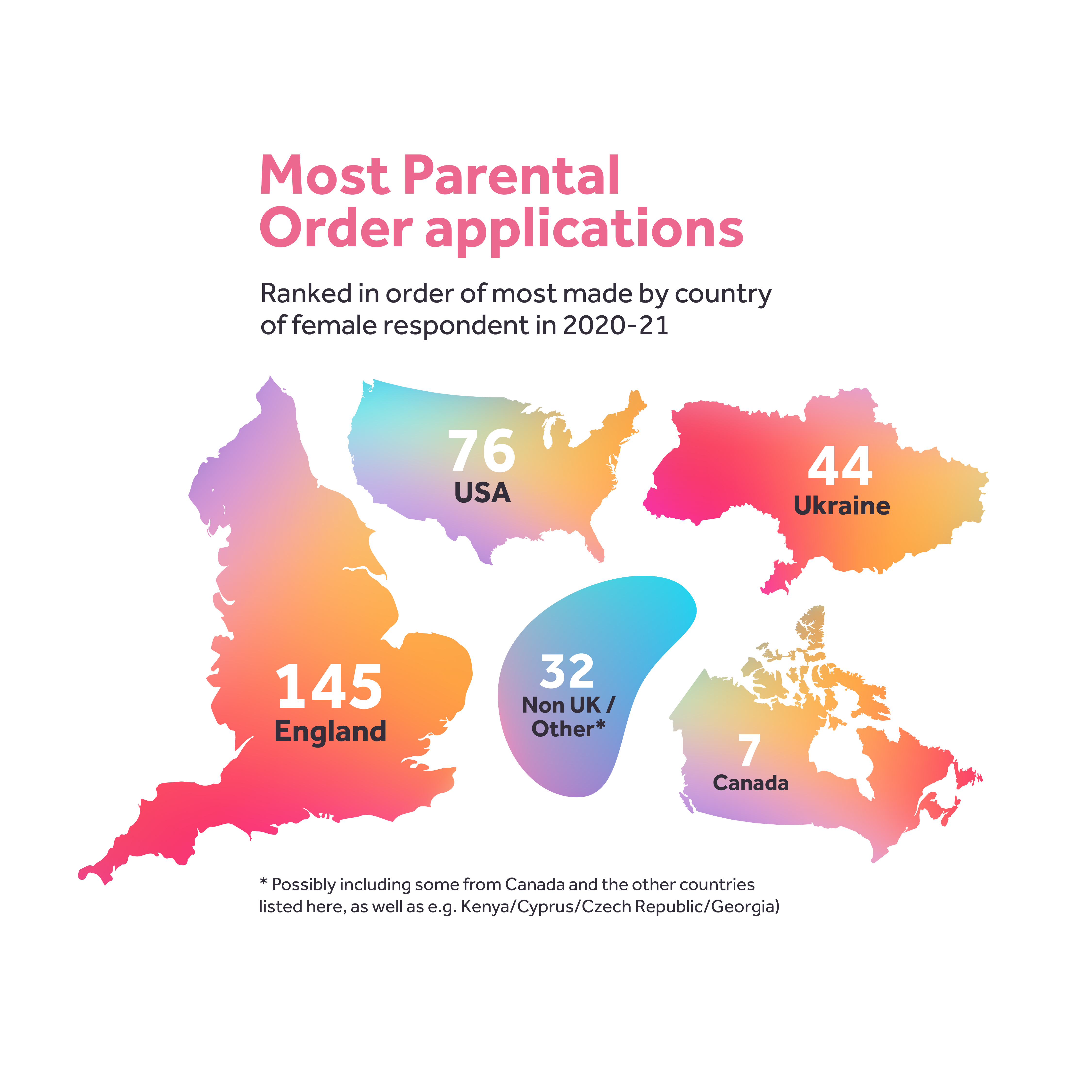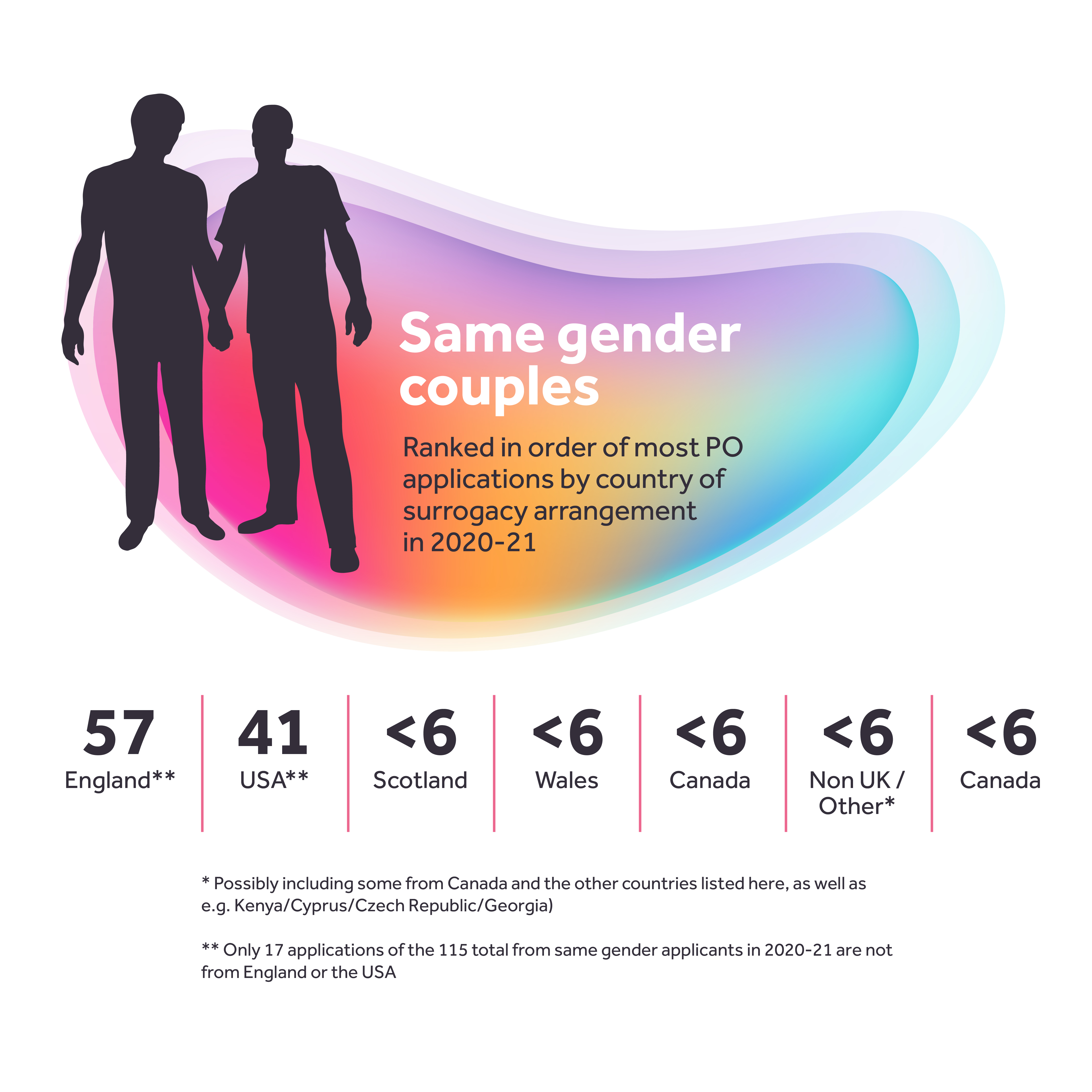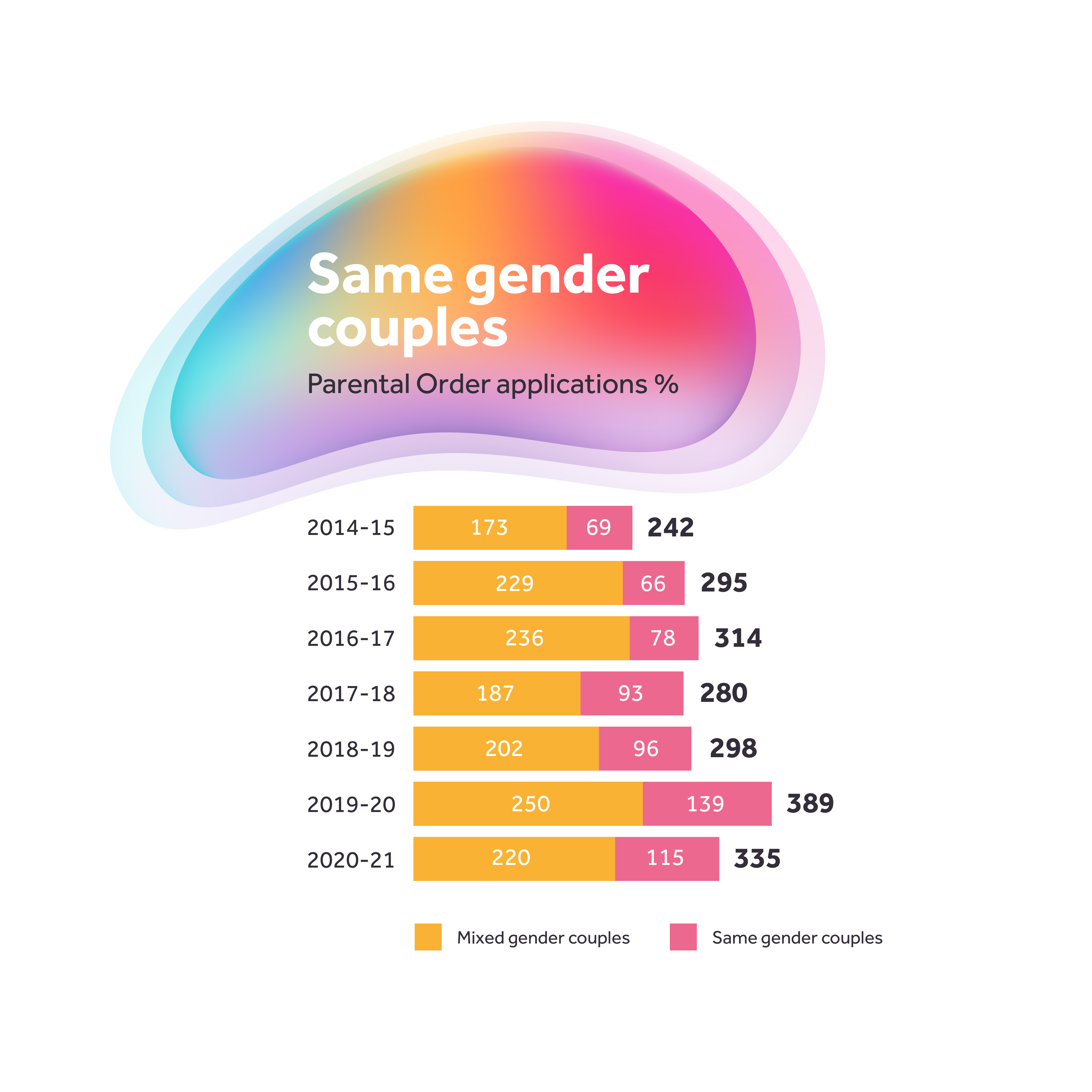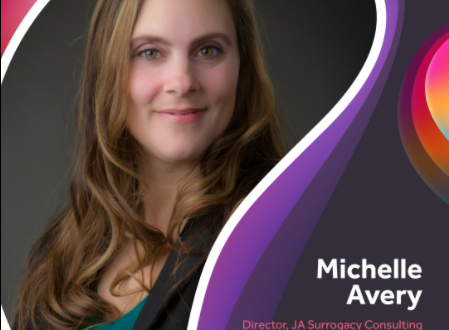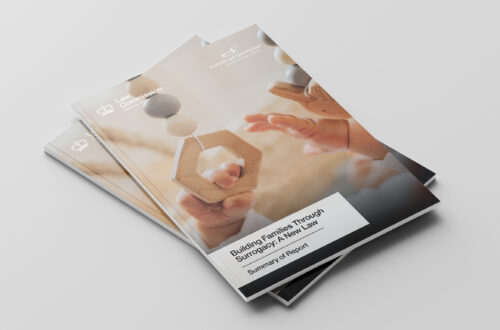Surrogacy trends for UK nationals; our exclusive findings
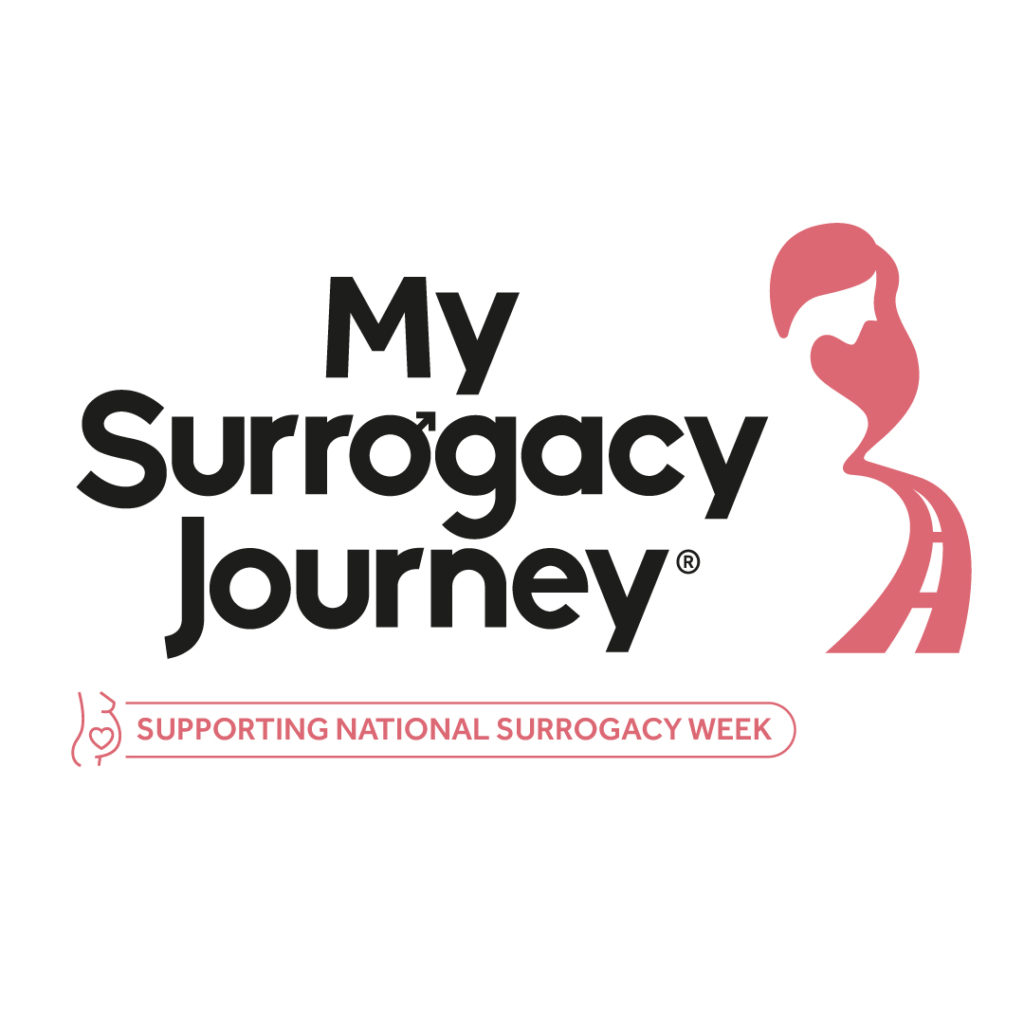
My Surrogacy Journey®, has collaborated with researcher Dr Kirsty Horsey, Reader in Law at the University of Kent, with a view to sharing findings from two fascinating sets of data on parental order (PO) applications. This insightful data relates to PO applications incorporating both domestic and international surrogacy arrangements from 2011 to 2021.
What is a parental order?
Parental orders are court orders that transfer legal parenthood to the intending parent(s) (IPs) from the surrogate (and potentially her spouse or partner if they are also the legal parent) after the birth of a child following a surrogacy arrangement. They are granted under s54 (two applicants) or s54A (single applicant) of the Human Fertilisation and Embryology Act 2008, providing certain conditions are met (such as that one or both IPs must be genetically related to the child; the applicants must be over 18; the child’s home must be with the applicants, etc). Courts granting POs are bound by the principle that the lifelong welfare of the child(ren) they are contemplating making the order in respect of is the paramount consideration.
POs are bespoke orders that were created specifically for surrogacy, in recognition that adoption is not the appropriate route for most IPs. At birth, the surrogate is always the legal mother of the child. She must give free and informed consent for the order to be made, effective from six weeks post-birth. A PO is always necessary for IPs to be able to achieve legal parenthood (other than by adoption), even if they undertook surrogacy in another jurisdiction where they were named as the parents on the birth certificate (e.g. California and some other US states, or the Ukraine) or by court order.
Once a PO is granted, the legal parenthood of the surrogate (and her spouse/partner where appropriate) is extinguished, the birth is re-registered to record the IP(s) as the legal parent(s), and a new birth certificate issued.
What does the data on parental orders show?
How many are there?
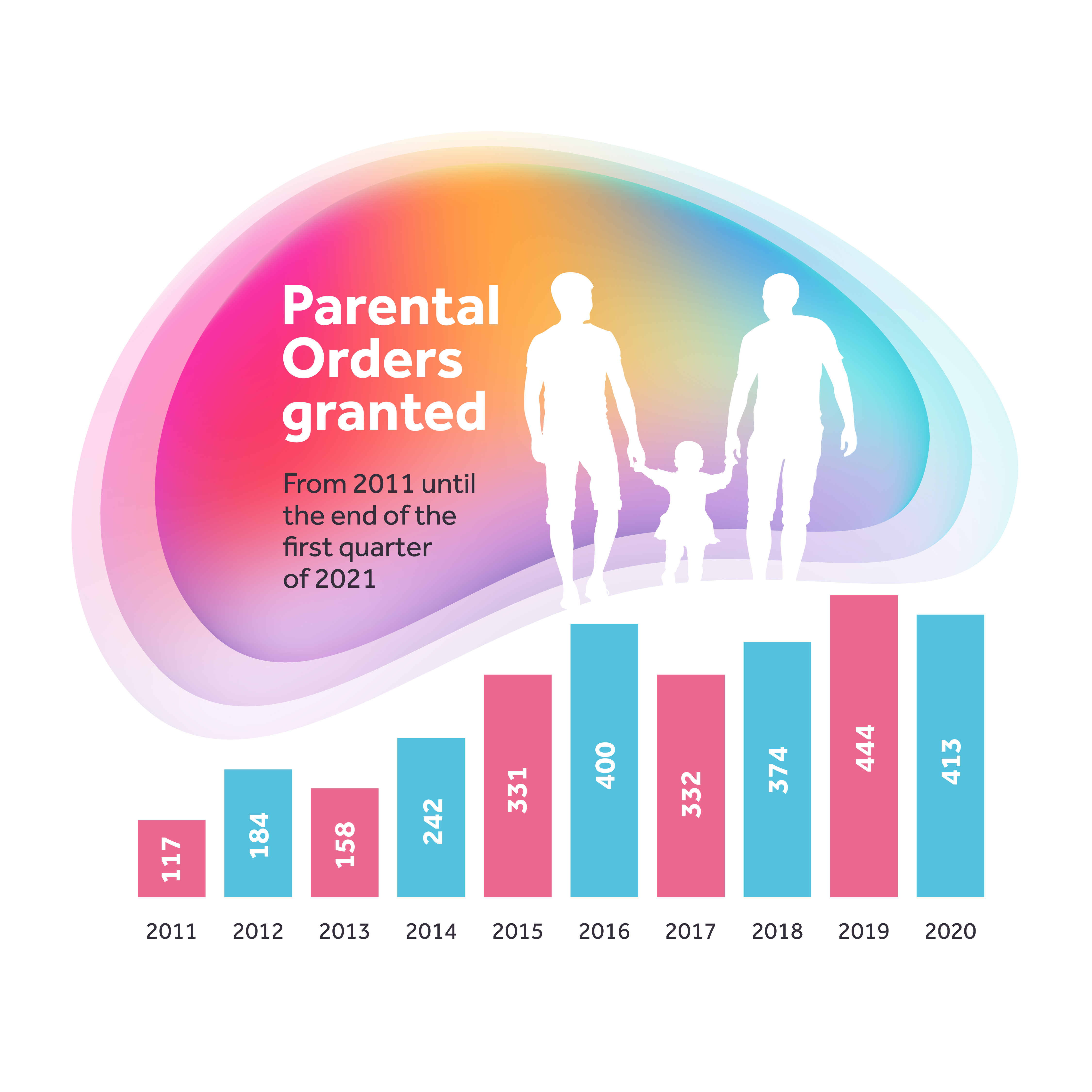
Data published by the Ministry of Justice on 24 June 2021 tells us how many POs have been granted to applicants in the family courts of England and Wales from 2011 until the end of the first quarter of 2021. The data show a gradual increase in the number of POs being granted, from 117 POs in 2011, to 413 in 2020, with a peak of 444 in 2019.
In the first quarter of 2021, 97 POs were granted, indicating that a similar number of POs will be obtained in 2021 overall as for the last two years. While these numbers are relatively small in terms of the numbers of children being born in total each year, they do indicate that surrogacy as a form of family building is a route for a significant number of families each year (though note that these figures only capture POs awarded, not the number of applications made, nor the number of surrogacy arrangements completed where a PO has not been applied for).
Interestingly, it seems that the PO process has not been adversely affected by the Covid-19 pandemic (many PO hearings were and are being conducted online during this period). Some reasons may be suggested for the general increase since 2011, including (but not limited to) the opening up of overseas surrogacy destinations and the ease of access to information about them from the early 21st century; increased support and information about ‘domestic’ surrogacy options (including the creation of a number of new non-profit support organisations); greater awareness and understanding of the need to apply for POs; campaigns for law reform, the Law Commission of England and Wales and Scottish Law Commission publicly consulting on reform of surrogacy laws from 2017, and government support for surrogacy as a legitimate form of family building in the form of Department of Health and Social Care Guidance published in 2018.
Trends
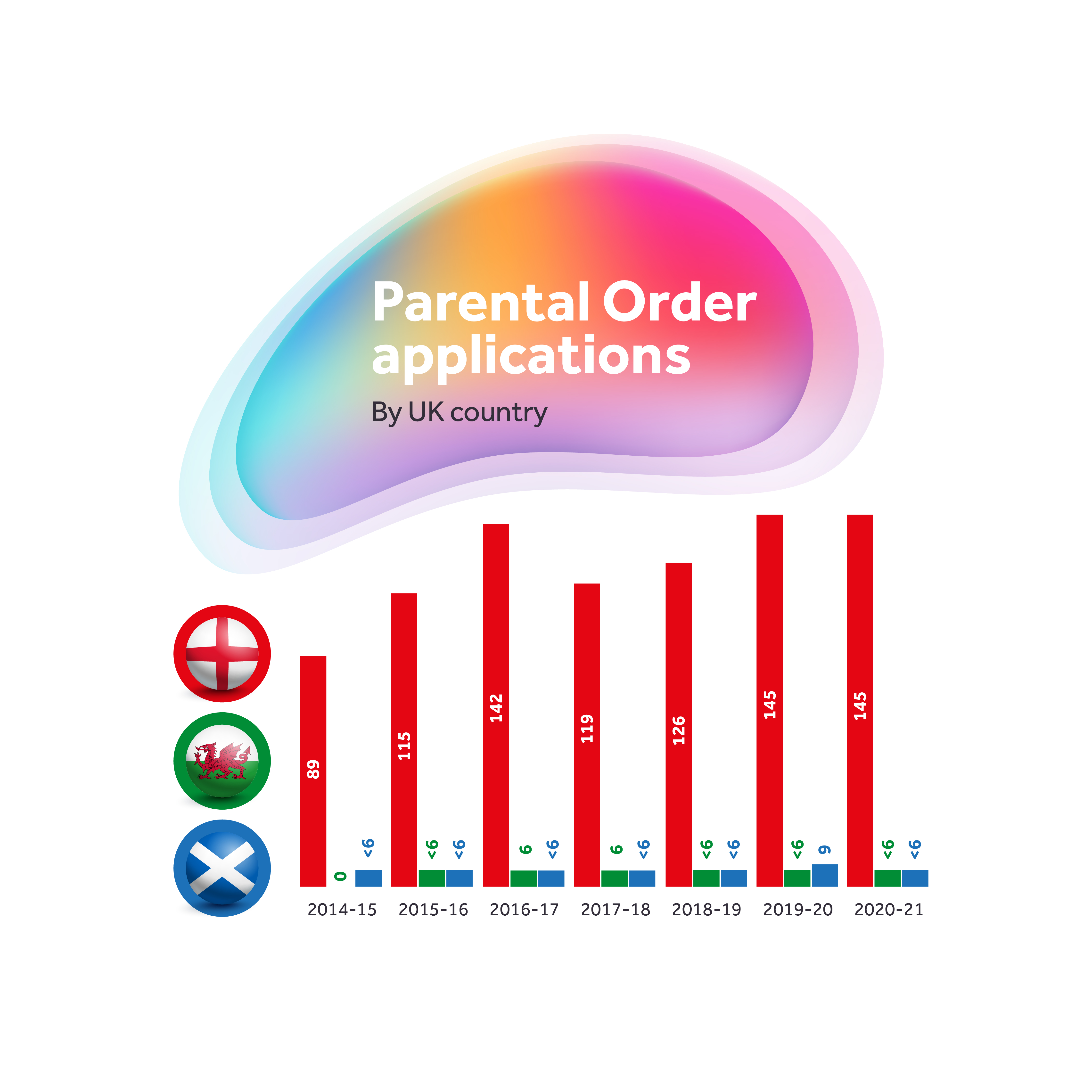
Further data obtained from Cafcass relates to the number of PO applications being made since 2014. Cafcass’ figures are based on the date the application was received by them (having been passed to them by a court where an application is lodged), by years running from 1 April to 31 March. They show the destinations that IPs opt for when family building through surrogacy, as indicated by the female respondent’s (usually the surrogate’s) address. In addition, the data is broken down to enable us to identify IPs’ approximate ages and geographical location, whether they are in a same gender relationship or whether they have applied for a PO as a solo applicant (which has only been possible since a law change in January 2019).
The trends we can identify are of wider interest as, in particular, they show how steady UK-based surrogacy (taking data on applications made where the female respondent is from England, Scotland or Wales) has remained since 2014, and how it has grown slowly and continues to grow steadily in numbers from 2016 onwards.
We might speculate that a reason for this is ‘domestic’ surrogacy having become more visible and more frequently considered a viable option since campaigns for law reform began in earnest around 2015 and the law reform process began with pre-consultation in 2017, followed by launch of a joint consultation paper and reform project by the Law Commission of England and Wales and the Scottish Law Commission in 2018, as well as the publication of the DHSC guidance mentioned above.
We can also see from where (recorded by Cafcass Service Area) PO applications are being made. The greatest number are (unsurprisingly) consistently made in Greater London (with >158 applications in 2020-21), though there are significant numbers from Surrey & Sussex (23 in the same year), Avon, Gloucestershire, Wiltshire and Thames Valley (22), Bedfordshire, Buckinghamshire & Hertfordshire (14), Cheshire and Merseyside (12), Hampshire and the Isle of Wight & Dorset (11), Nottinghamshire and Derbyshire (11), Leicestershire, Lincolnshire and Cambridgeshire (11) and Birmingham, the Black Country, Shropshire, Worcestershire, Staffordshire and Herefordshire (11).
Where else are IPs seeking surrogacy?
In terms of destinations for international surrogacy arrangements, the data clearly reflect the impact of destinations such as India ceasing to offer international surrogacy services since the Surrogacy Regulation Bill 2016 brought an end to most couples from abroad pursuing India as a route to build their family. However, where one pathway ends another thrives, and the number of couples using the Ukraine has sharply risen since 2017, becoming probably the no.4 destination overall, made up of parental orders applications made mostly within the last four years,[1] and the no.3 destination in 2020-21 after England and the USA. This is a trend we anticipated (with India no longer available and the Ukraine being a cheaper option than US surrogacy) but is somewhat concerning, given concerns about exploitation, its LGBTQI+ unfriendliness, etc.
We can also see that the number of international surrogacy arrangements is increasing in some other overseas destinations, including in the USA, Nigeria and ‘non-UK other’ (this may be e.g. Greece, Cyprus, Georgia, Kenya: all of which we know to be developing themselves as surrogacy destinations). Applications relating to other international destinations which were once popular have, however, very much declined (i.e. India, Thailand).
One observation is that the number of applications relating to surrogacy arrangements undertaken in Canada seems low, though the number has increased slowly from 2017-18 onwards (decreasing significantly in 2020-21). It might be that some of the applications that relate to surrogacy undertaken in Canada are recorded in the data elsewhere (e.g. where the respondent is listed as ‘non UK Other’, where the respondent information is not held, or where there is an ‘unknown address’).
Same gender couples
There has been a sharp rise in the number of same gender couples applying for POs since 2014. The number near doubled from 69 in 2014-15 to 115 in 2020-21, with a peak of 139 applications by same gender IPs in 2019-20. The proportion of applications from same gender applicants has also increased, moving from about a quarter of all applicants to around a third (or more).
Reasons for this increase might include greater awareness in recent years that POs are still required to achieve formal legal parenthood even where a couple may both be named as parents on a birth certificate or by a court order issued in another country. As can be seen below, a significant number of PO applications made by same gender applicants result from surrogacy arrangements undertaken in the USA, where IPs being named on the birth certificate is common. Additionally, the steady growth may reflect greater acceptance of same gender families and the recognition of same sex marriage in law.
What can also be seen is that the top destinations for same gender couples to seek surrogacy arrangements are the USA and the UK, with the number of same gender couples travelling to the US for surrogacy remaining relatively constant for the last five years. This number has, however, been overtaken by the number of same gender couples entering surrogacy arrangements in England and Wales or Scotland since 2019.
Single applicants
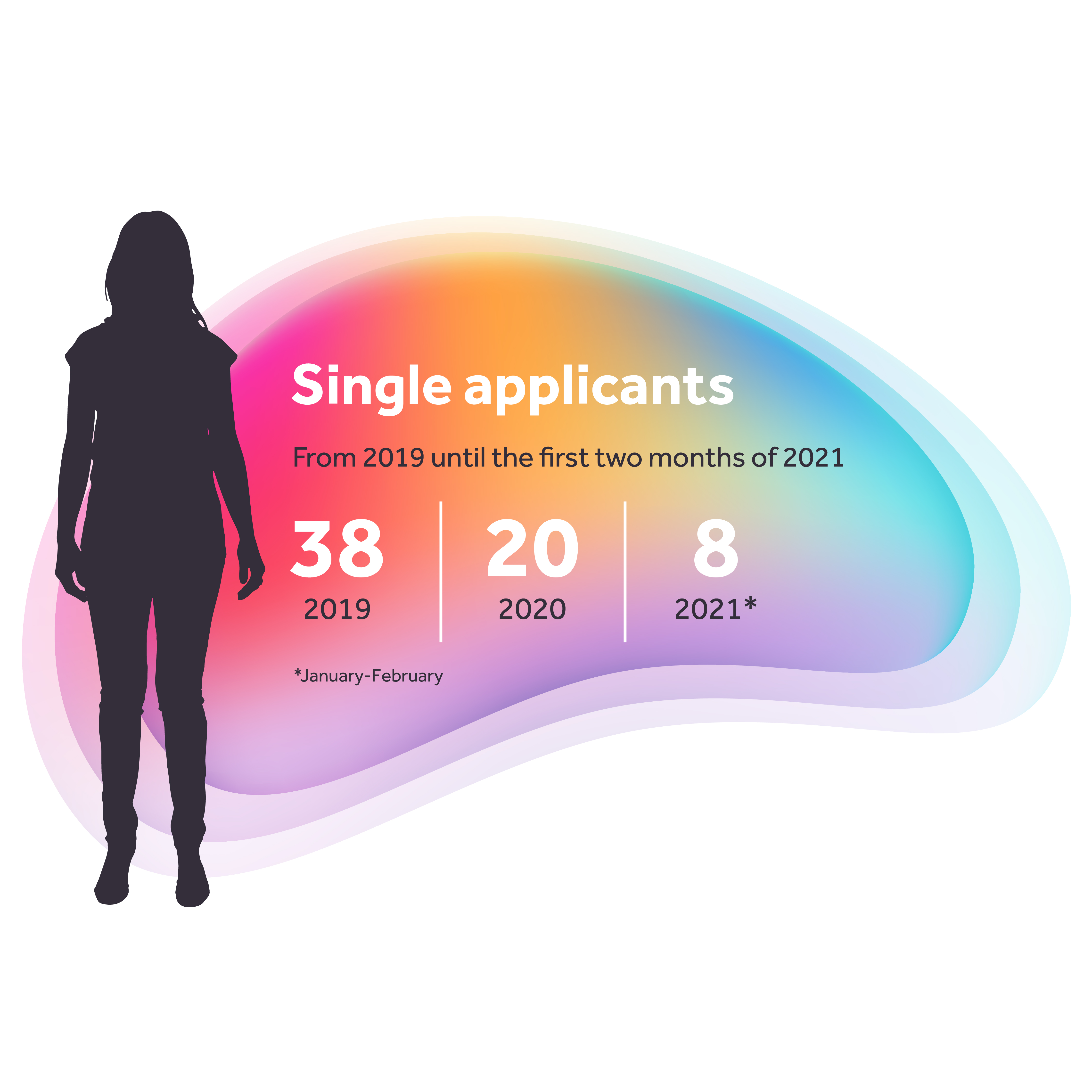
POs have only been available to single applicants (who have a genetic relationship with the child born via surrogacy) since 3 January 2019, after a remedial order was passed in 2018 to alter the legislation. In 2019, there were 38 applications for a PO by single-applicant IPs (presumably some of these were historical, as until 4 July 2019 applicants could apply in relation to a child born on any date), followed by 20 in 2020 and 8 in the first two months of 2021.
Cafcass data show that the mean age of applicants (bearing in mind that in most applications there are two applicants) for POs between 2014-15 and 2020-21 is between 40 and 49 years old (1,753 total applicants), followed by between 30 and 39 years old (1,645 total applicants). There were 459 applicants aged between 50 and 59 in the same period and only 141 applicants aged between 18 and 29. These figures are not surprising.
Explanatory notes:
- The Ministry of Justice publishes quarterly data on activity in the family courts of England and Wales, which includes information on the number of parental orders granted. The latest data set, including information up to the end of March 2021, was published on 24 June 2021 and is available at https://www.gov.uk/government/statistics/family-court-statistics-quarterly-january-to-march-2021.
- Cafcass is the Children and Family Court Advisory and Support Service, a non-departmental public body established to independently represents the interests of children in family court cases in England (Cafcass Cymru in Wales). In relation to surrogacy, the court will ask Cafcass to provide a Parental Order Reporter, to help it decide on the parental order application. Parental Order Reporters work for Cafcass and are fully qualified social workers. The data discussed in the report was obtained in response to two Freedom of Information requests, granted on 26 March 2021 and 6 May 2021. The Cafcass Service Areas can be seen at https://www.cafcass.gov.uk/contact-us/find-local-cafcass-office/
- Parental orders are granted pursuant to sections 54 and 54A Human Fertilisation and Embryology Act 2008, which set out the relevant criteria.
- Courts considering parental order applications are bound by the principle that the lifelong welfare of the child in question is their paramount consideration (The Human Fertilisation and Embryology (Parental Orders) Regulations 2010).
